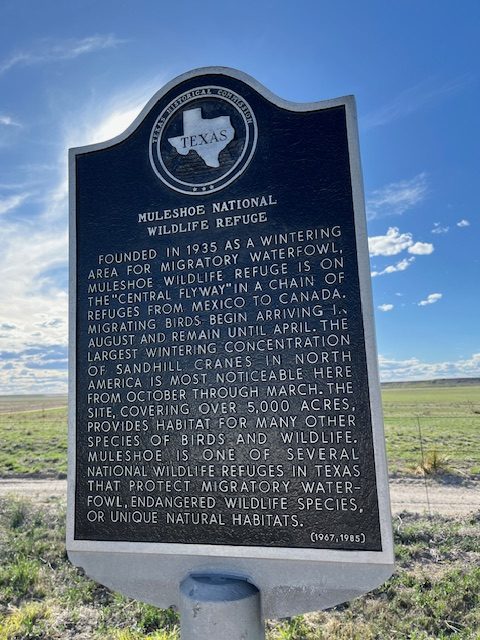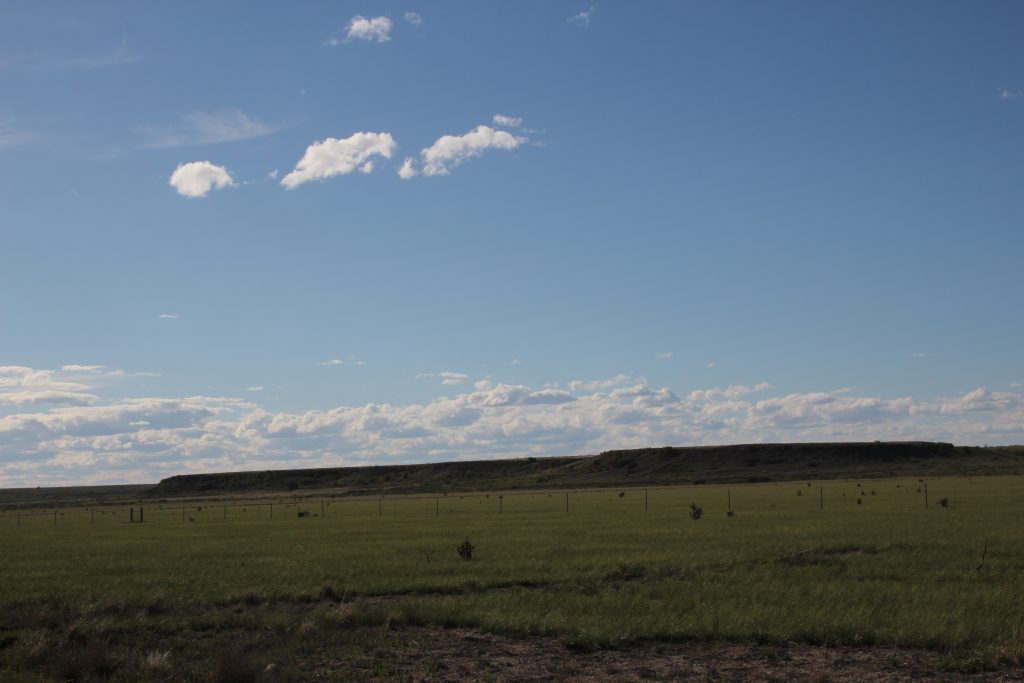The announcement was made the second week of April by the U.S. Fish and Wildlife Service that a land protection plan of up to 700,000 acres of wildlife habitat along the Texas-New Mexico border as part of the Muleshoe National Wildlife Refuge has been accepted. Expansion of the National Wildlife System is a plan to support community-assisted efforts to conserve and improve the grasslands, water, and native habitat in America. That land will be acquired from willing landowners through easements or actual purchase of land. So how does that work?
I spoke with Jude Smith, the refuge project leader, to explain to me how that will work. In simple terms, the land will add more area to the Muleshoe refuge and in some locations connect the Muleshoe refuge to the Grulla refuge in New Mexico, adding more habitat for a variety of species. Jude said landowners have approached him in the past about land they wanted to sell that is adjacent to the refuge; now those purchases or in some cases, easements, can happen if the landowners are still interested. If the landowner changes his/her mind about selling the land or creating an easement and chooses not to participate, that is acceptable as well.
Jude emphasized that the land eventually added to the refuge will be acquired voluntarily; no landowner will be forced to give up the land for the refuge, no eminent domain or government land grab is at work here. He also said it will most likely take thirty to forty years for this land expansion to be completed.
If the landowner agrees to an easement, that means that no structures can be built on the land, no solar panels installed, no wind turbines added, no subdivisions can be created, and it cannot be farmed in most cases. The property can be grazed, and hunting is allowed, but the landowner retains hunting rights. If the landowner chooses to go with an easement, the easement is perpetual.
Another option is for the property owner to sell the land to the refuge. In this case, the property becomes part of the refuge and is managed by the refuge. The property then becomes public property and the refuge will manage the grassland, and in most cases will allow public access and hunting.
Funding for buying this land or setting up the easements comes from, appropriately, taxes and fees from programs like the federal duck stamp, which is required to hunt waterfowl and has been sold for eight-six years, earning more than one billion dollars for wetland conservation. The Land and Water Conservation Fund is another source of funding for land acquisition. This fund, established in 1965 to acquire federal land for conservation and recreational purposes, does not rely on taxpayer money, but is funded primarily through revenues the federal government earns on oil and gas leases, mostly on offshore federal lands.
The expansion will add conserved, protected grasslands, playa lakes, saline lakes, and all will benefit a variety of wildlife, including the lesser prairie chicken, pronghorns, sandhill cranes, ducks, quail, hawks, eagles, burrowing owls, foxes, bobcats, the occasional whooping crane, and other birds and animals who choose to live there.
Playa lakes and saline lakes will also be added through this program and serve different purposes. Playa lakes are recharge lakes that collect rainfall and are important in restoring the Ogallala aquifer. Saline lakes are discharge lakes that are filled with water coming from springs in the ground and have flowing water. Both lakes provide needed habitat for a variety of wildlife.
Expanding the refuge through this program will be good for the refuge and its wildlife, and good for Muleshoe. Jude said for every federal dollar spent on the refuge, around $7 is returned to the community by bringing visitors to the area, using local businesses for supplies when possible, and by the revenue sharing program that sends the county a check annually to help offset taxes. Adding protected grasslands and lakes benefits the birds and other wildlife as well as protecting other resources, such as ground water. The Muleshoe National Wildlife Refuge is the oldest refuge in Texas and was created to protect the lakes in the refuge for migratory birds.
If you have questions about this program, or own land you might like to have considered in the expansion, or have questions about the wildlife at the refuge, give Jude a call at 806-946-3341.
I would encourage you to visit the refuge at different times of the year and see what we have right here in our own back yard. You might be surprised at what you discover out there.
I would also encourage you to visit my other blog story about the refuge, “The Oldest Wildlife Refuge in Texas,” from December 7, 2024. Just type that title in the Search line, click on Search and the story will come up. More pictures of the refuge are in that story.
Thanks to Jude Smith for his help with this article and for his dedication managing the refuge.


Great article. Thanks for posting. As a Boy Scout raised in Muleshoe, this is a wonderful concept. We spent lots of time there, anf local churches went there during summer vacation Bible school.
We are fortunate to have the refuge here. I wish more people would visit it more often, myself included!
Mrs. Liles- this is wonderful news for Muleshoe and the area. Thanks for sharing!
You bet, Amber! I wanted everyone to know how the expansion would come about and that it is all voluntary for the landowners.